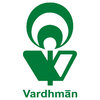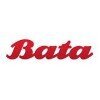Filter interviews by
Clear (1)
Nandan Denim Head of Department Qa Interview Questions, Process, and Tips
Nandan Denim Head of Department Qa Interview Experiences
1 interview found
I applied via Recruitment Consulltant and was interviewed before Jun 2022. There was 1 interview round.
(7 Questions)
- Q1. What is the daily prodn and efficiency status ? What is the present Uster quality level ? How is the attrition and turnover rate in this group
- Ans.
The daily production and efficiency status, Uster quality level, and attrition/turnover rate are key metrics for evaluating the performance of the QA team.
Daily production and efficiency status are monitored to ensure targets are being met and to identify areas for improvement.
Uster quality level indicates the standard of quality being maintained in the production process.
Attrition and turnover rates reflect the stabil...
- Q2. What is the present attrition rate in company ?
- Ans.
The present attrition rate in the company is 15%.
The current attrition rate is 15%.
Attrition rate can be calculated by dividing the number of employees who left the company by the average number of employees, then multiplying by 100.
High attrition rates can indicate potential issues within the company such as poor work culture, lack of growth opportunities, or inadequate compensation.
- Q3. Present quality level
- Ans.
Our current quality level is meeting industry standards but there is room for improvement.
Regular quality audits are conducted to ensure compliance with standards
Defect tracking and resolution process is in place
Continuous improvement initiatives are being implemented
Customer feedback is actively collected and analyzed
- Q4. Present burning problems
- Ans.
Some burning problems include lack of automation in testing, inconsistent test environments, and inadequate test coverage.
Lack of automation in testing leads to slower testing processes and increased chances of human error.
Inconsistent test environments can result in unreliable test results and difficulty in reproducing bugs.
Inadequate test coverage may lead to undetected bugs in production.
- Q5. Present recovery and packing
- Q6. What are the common TQM.concepts used ?
- Ans.
Common TQM concepts include continuous improvement, customer focus, employee involvement, and process management.
Continuous improvement: Striving for incremental improvements in processes and products over time.
Customer focus: Meeting customer needs and expectations through quality products and services.
Employee involvement: Engaging employees in quality improvement initiatives and decision-making.
Process management: M...
- Q7. What is Six Sigma and how it can be applied in plant level ?
- Ans.
Six Sigma is a data-driven methodology used to improve processes by reducing defects and variation, leading to increased efficiency and quality.
Six Sigma focuses on identifying and eliminating causes of defects and errors in a process.
It uses statistical analysis to measure and improve process performance.
Six Sigma aims for a process capability of 6 standard deviations between the process mean and the nearest specifica...
Interview Preparation Tips
- Technical
Top trending discussions






Interview questions from similar companies

I applied via Approached by Company and was interviewed before Apr 2022. There were 3 interview rounds.

Maths reasoning English questions
(2 Questions)
- Q1. Why likes spinning?
- Ans.
Spinning helps me relax, stay active, and improve my overall well-being.
Spinning is a great form of cardiovascular exercise that helps improve heart health.
It allows me to destress and clear my mind after a long day at work.
Spinning helps me stay active and maintain a healthy lifestyle.
I enjoy the sense of accomplishment and endorphin rush after a challenging spin class.
- Q2. What is carding function?
- Ans.
Carding function is a process of verifying the validity of credit or debit card information.
Carding function is used to prevent fraudulent transactions.
It involves checking the card number, expiration date, CVV code, and other details.
If the information is valid, the transaction is approved.
If the information is invalid or suspicious, the transaction is declined.
Carding function is used by banks, payment processors, an
Interview Preparation Tips
Skills evaluated in this interview


(4 Questions)
- Q1. ITI electrician department
- Q2. Electronic department
- Q3. Electronic department working
- Q4. Electrician department working
(3 Questions)
- Q1. Electronic department
- Q2. Electronic department working
- Q3. Electrician department
Interview Preparation Tips

I applied via Naukri.com and was interviewed in Aug 2023. There was 1 interview round.
(2 Questions)
- Q1. All process in material received & issued and report preparing
- Q2. Same question. Process received material and issue
Interview Preparation Tips
- Invoice Processing
- MRN
- Logistics
- Taxation

I appeared for an interview in Jan 2025.
Basic and general test
Testing common questions of aptitude
(2 Questions)
- Q1. Basic details like education and all
- Q2. Basics question related to field of prior experience

I applied via Referral and was interviewed before Mar 2021. There were 2 interview rounds.

(3 Questions)
- Q1. What are your salary expectations?
- Q2. What is your family background?
- Q3. Share details of your previous job.
Interview Preparation Tips

I applied via Company Website and was interviewed in Jan 2022. There was 1 interview round.
(1 Question)
- Q1. Utility experience related to your feild knowledge they will ask you
Interview Preparation Tips

(1 Question)
- Q1. All technical about manufacturing
(1 Question)
- Q1. Quality management system

I applied via Naukri.com and was interviewed before Mar 2023. There was 1 interview round.
(1 Question)
- Q1. Testing related questions
Interview Preparation Tips
Situational based questions
Transformer testing
Power factor

I applied via Naukri.com and was interviewed in Jun 2023. There were 5 interview rounds.

(1 Question)
- Q1. Asking about Family and last company details.
(1 Question)
- Q1. Asked about past experience and job responsibilities.
(1 Question)
- Q1. 6 nos. Of interviewer and asking technical, personal and professional questions.
(1 Question)
- Q1. Again discussion for salary and negotiation for same from both side.
Nandan Denim Interview FAQs
Some of the top questions asked at the Nandan Denim Head of Department Qa interview -
Recently Viewed
Tell us how to improve this page.
Interview Questions for Popular Designations
- Department Manager Interview Questions
- Department Head Interview Questions
- Production Department Interview Questions
- Assistant Department Manager Interview Questions
- Collection Department Interview Questions
- Quality Department Interview Questions
- Maintenance Department Technician Interview Questions
- Administrator Department Interview Questions
- Show more
Nandan Denim Head of Department Qa Interview Process
based on 1 interview
Interview experience
Interview Questions from Similar Companies
Nandan Denim Head of Department Qa Reviews and Ratings
based on 1 review
Rating in categories
|
Assistant Manager
14
salaries
| ₹4 L/yr - ₹6.7 L/yr |
|
Senior Executive
13
salaries
| ₹4.3 L/yr - ₹8 L/yr |
|
Executive Accountant
12
salaries
| ₹2.4 L/yr - ₹4.5 L/yr |
|
Electrical Engineer
10
salaries
| ₹2.2 L/yr - ₹6 L/yr |
|
HR Executive
10
salaries
| ₹2 L/yr - ₹4.5 L/yr |

Arvind Group

Raymond Lifestyle Limited

Bombay Dyeing

Vardhman Fabrics
- Home >
- Interviews >
- Nandan Denim Interview Questions >
- Nandan Denim Head of Department Qa Interview Questions










